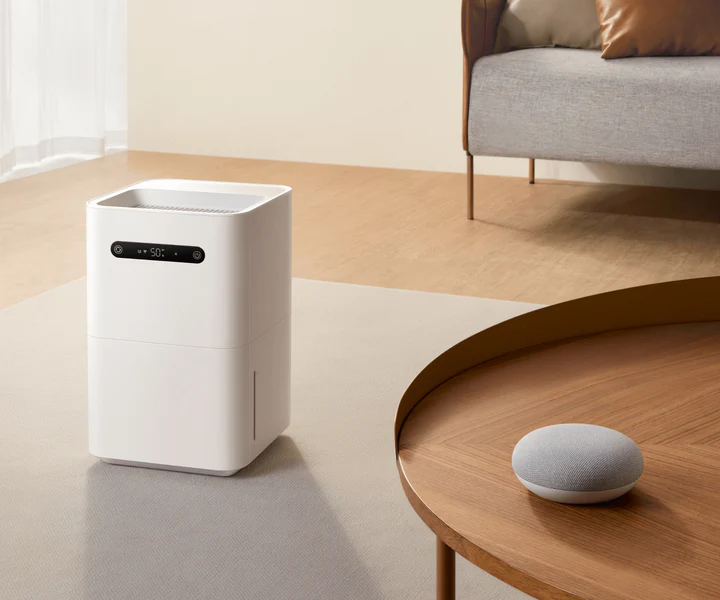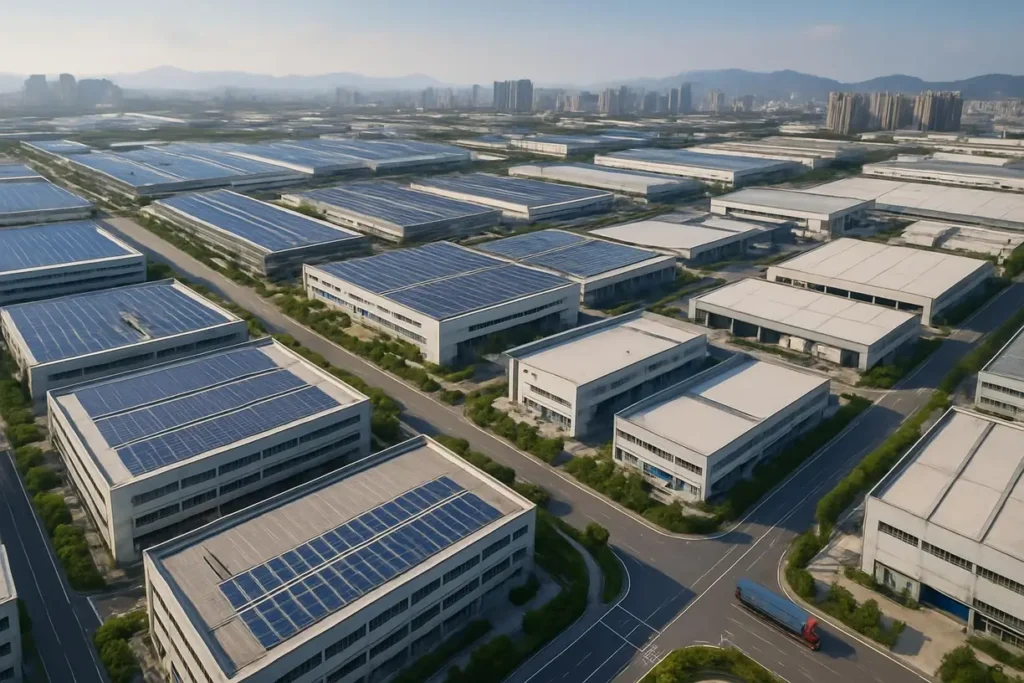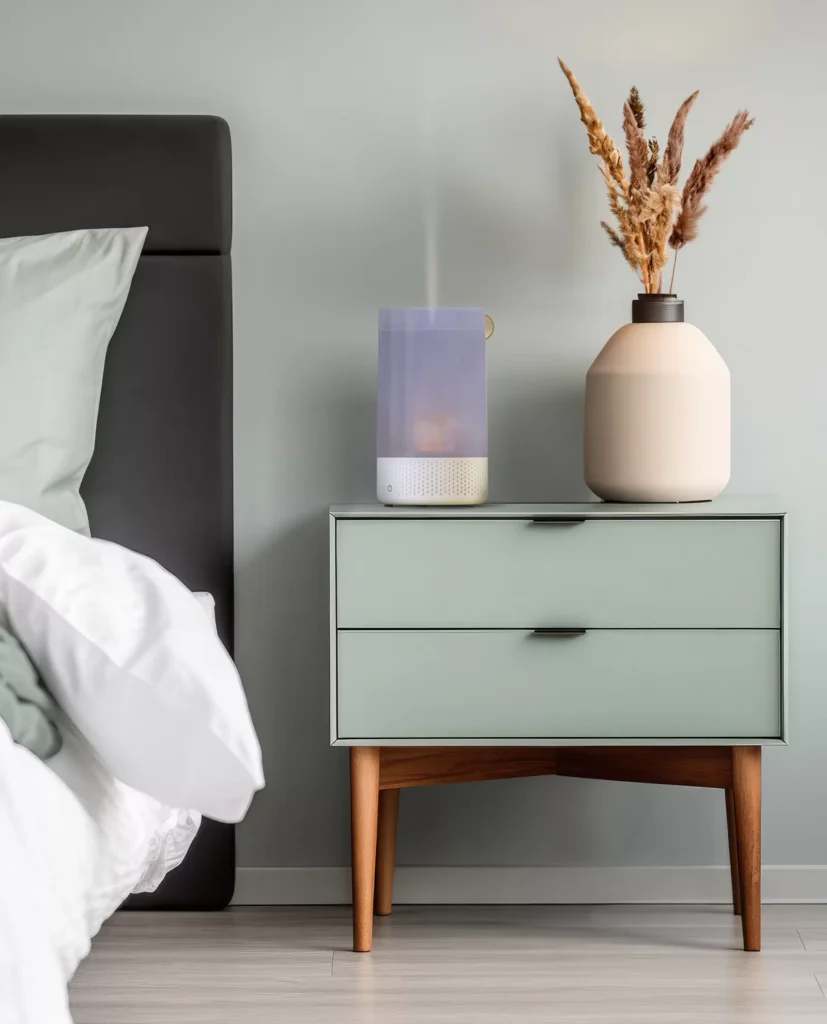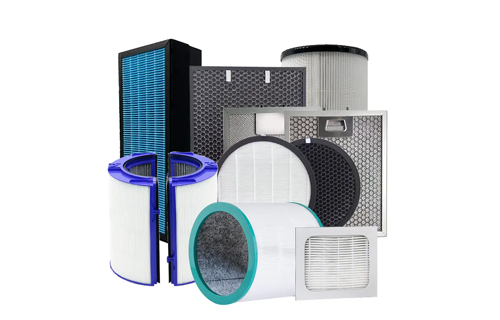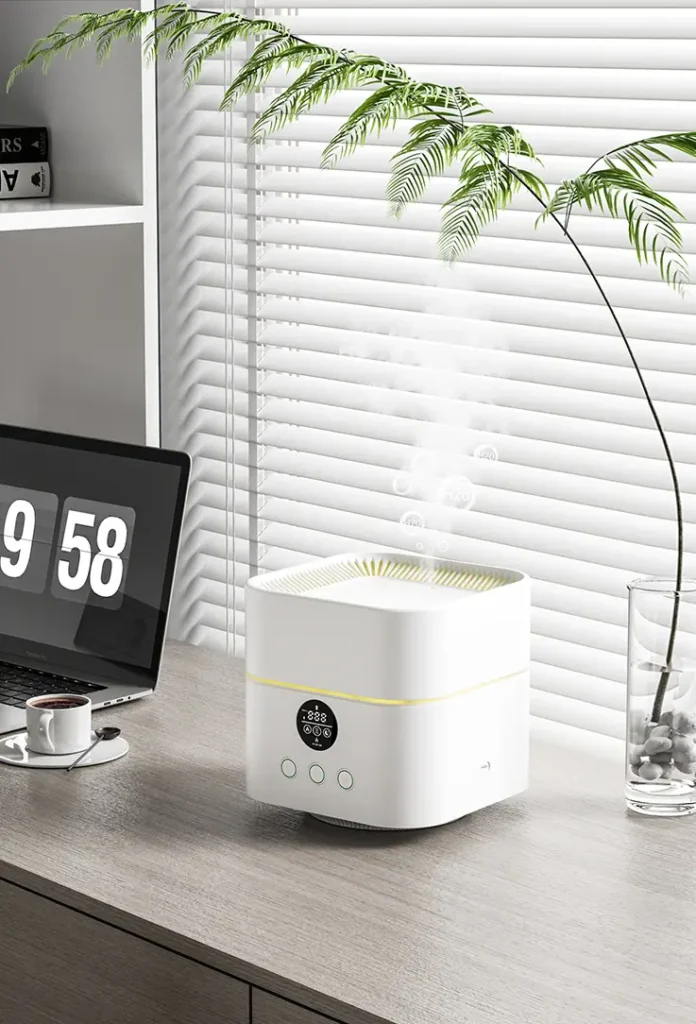공기청정기를 구매하기 전에 어떻게 작동하는지 알고 싶으신가요? 작동 원리는 매우 간단합니다. 이 간단한 다이어그램을 보세요:
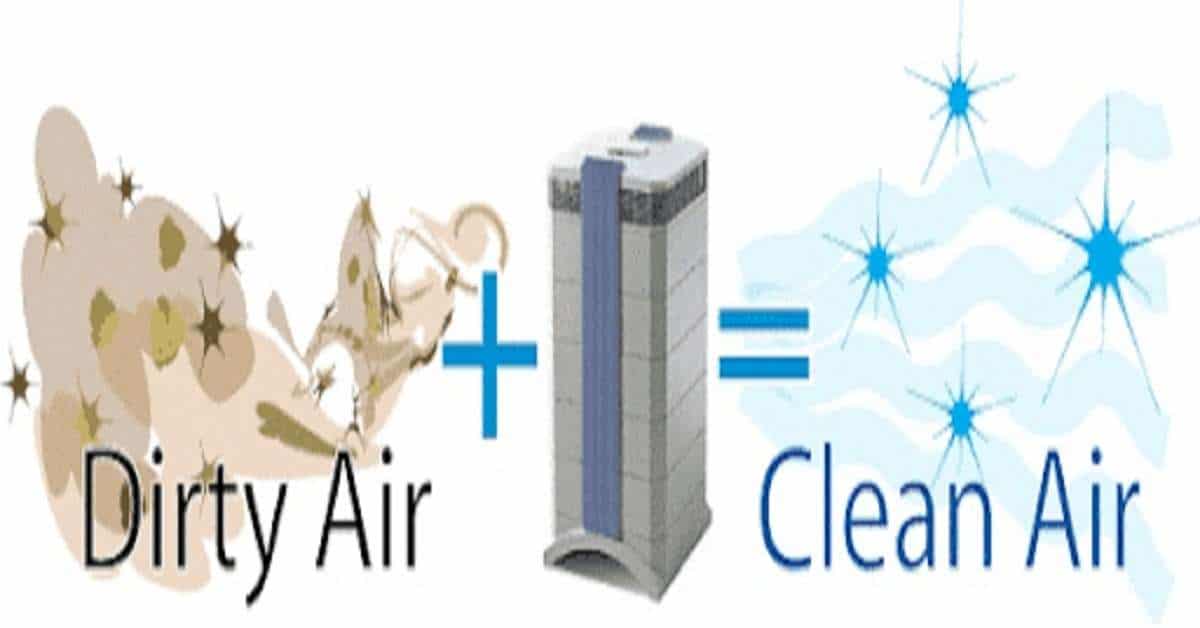
An 공기청정기 제조업체 하나 이상의 필터 유형을 결합하여 실내 공기를 정화 및 살균할 수 있습니다. 하지만 공기 정화 시스템의 가장 기본적인 아이디어는 방금 보여드린 다이어그램에 나와 있습니다.
공기청정기는 어떻게 작동하나요?
기본적으로 공기청정기는 더러운 실내 공기를 빨아들여 여러 단계의 필터를 거쳐 깨끗하게 정화하여 밖으로 내보내는 역할을 합니다.
부유 입자, 먼지로부터 공기를 제거하는 공기 청정기 역할을 합니다, 연기매연, 꽃가루, 애완동물의 비듬, 머리카락, 심지어 세균과 생물학적 오염 물질까지 포함할 수 있습니다.
공기청정기의 작동 원리 동영상
물론 이 기본적인 설명보다 더 많은 것이 있습니다. 실제로 어떻게 작동하는지 자세히 알고 싶으시다면 계속 읽어보세요! 대부분의 공기청정기가 어떻게 작동하는지에 대해 가장 자주 묻는 질문에 답해드리겠습니다.
공기 필터링은 어떻게 작동하나요?
공기청정기의 작동 방식은 음이온화 또는 기계적 여과라는 두 가지 주요 방식이 있습니다.
- 기계식 공기 여과 - HEPA 필터, 활성탄 필터를 사용하며 일부 모델에는 UV-C 필터를 통합하여 공기를 정화하기도 합니다.
- 음이온화 발생기 - 충전된 전선을 사용하여 음이온을 생성하여 더러운 공기에서 발견되는 이온과 짝을 이루어 가장 가까운 물체에 달라붙도록 무게를 줄입니다. 이것이 음이온 공기청정기의 작동 원리입니다.
다른 공기청정기 브랜드 공기 정화를 위한 다양한 절차가 있습니다. 가장 경쟁력 있는 설계는 다단계 공기 필터링 프로세스를 사용합니다.
공기 필터의 수명은 얼마나 되나요?
필터는 일반적으로 기기 설명서에 따라 3~4개월마다 교체해야 합니다. 이는 필터가 최적의 성능을 발휘하고 오염 물질을 재순환시키지 않고 실내 공기를 깨끗하게 정화할 수 있도록 하기 위함입니다.
에어 필터는 어떻게 작동하나요?
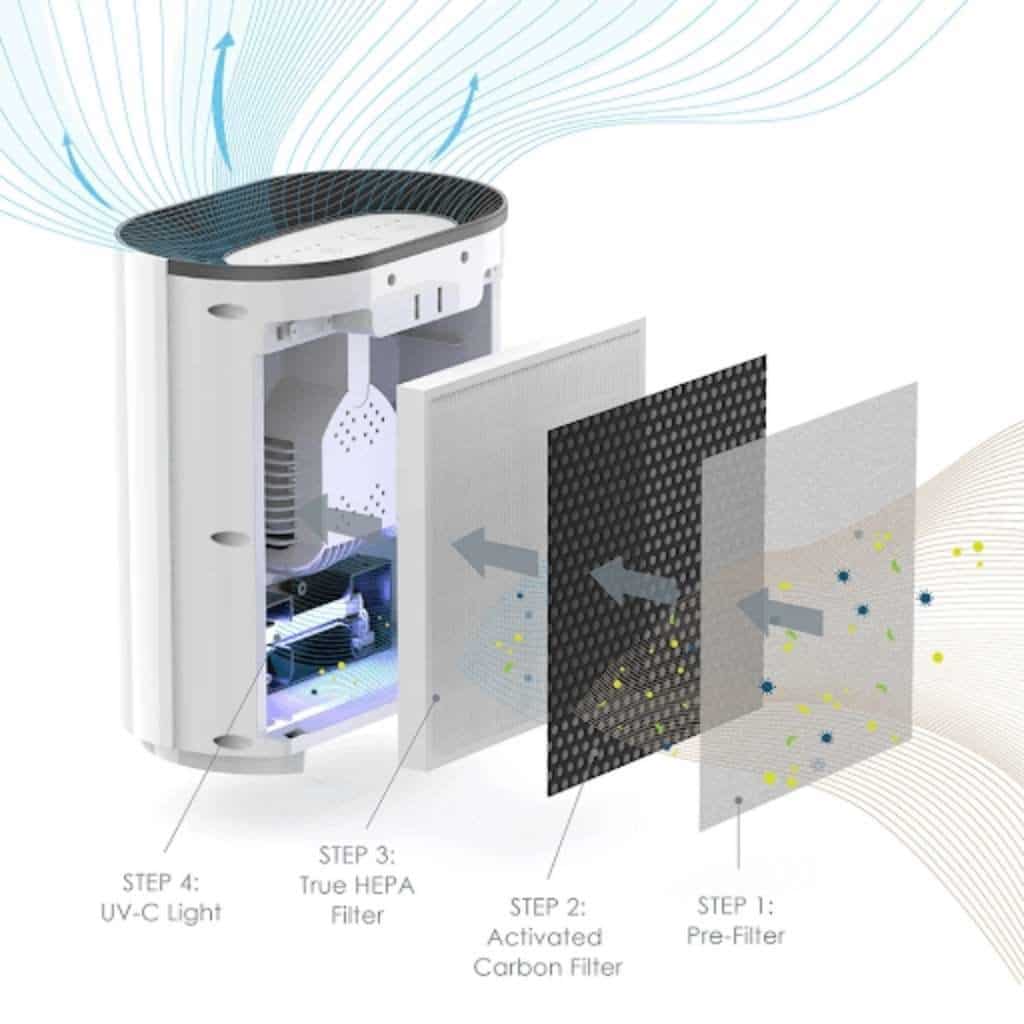
공기 필터는 오염 물질, 먼지, 꽃가루 및 세균을 걸러내는 방식으로 작동합니다. 탄소 필터와 같은 특정 필터는 냄새, 연기 및 VOC(휘발성 유기 화합물)를 걸러냅니다.
상업용 공기 청정기 가정, 원룸, 사무실에서 사용하는 공기청정기에는 보통 HEPA 필터와 활성탄이 장착되어 있습니다.
부유 입자에서 발견되는 이온과 결합하여 공기를 정화하기 위해 이온을 방출하는 이온화 공기청정기도 있습니다.
다음은 가장 일반적인 공기 필터 몇 가지와 그 작동 방식입니다.
HEPA 필터의 작동 원리
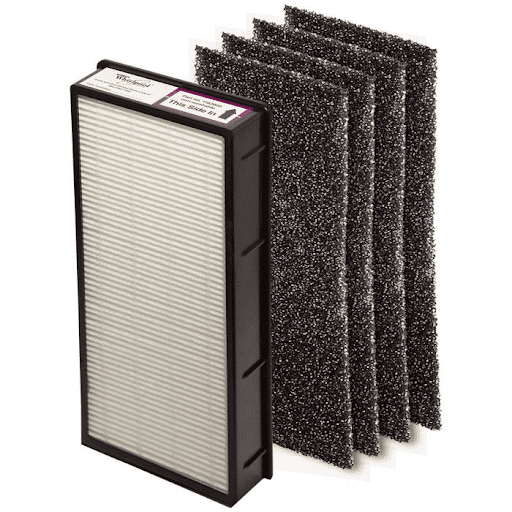
진정한 HEPA 필터는 최소 99.97% 효율(ASME)로 0.3마이크론 이하의 서브미크론 입자를 포착할 수 있습니다.
이를 시각화하기 위해 육안으로 볼 수 있는 가장 작은 입자는 약 10마이크론입니다. 이보다 작은 입자는 눈에 보이지 않습니다.
HEPA는 고효율 미립자 포집의 약자입니다. ASME 또는 유럽 표준에서 정한 요구 사항을 충족하도록 설계되었습니다.
헤파 공기청정기는 어떻게 작동하나요?
True HEPA 필터가 포집하는 입자에는 폐로 들어갈 수 있는 아주 작은 먼지 입자, 오염 물질 및 꽃가루가 포함됩니다. 또한 아스페르길루스 니거, 페니실륨 시트리눔과 같은 바이러스와 박테리아도 포집할 수 있습니다. 코로나 바이러스와 같은 나노 입자 .
활성탄 필터는 어떻게 작동하나요?
활성탄의 작동 원리
분말 형태의 입상 탄소 블록으로 구성된 활성탄은 흡수성이 있습니다. 따라서 숯층 필터를 통해 오염 물질과 알레르기 유발 물질을 흡수할 수 있습니다.
활성탄 필터는 어떻게 작동하나요?
활성탄 필터는 가스, 휘발성 유기 화합물(VOC) 및 화학 물질을 여과하는 데 널리 사용되는 여과 부품입니다. 유일한 단점은 탄소 필터가 먼지 입자, 진드기, 머리카락, 꽃가루를 제거하는 데 효율적이지 않다는 것입니다.
따라서 고성능 공기청정기에는 입자와 연기를 모두 걸러내기 위해 HEPA 필터와 활성탄 필터가 통합되어 있는 경우가 많습니다.
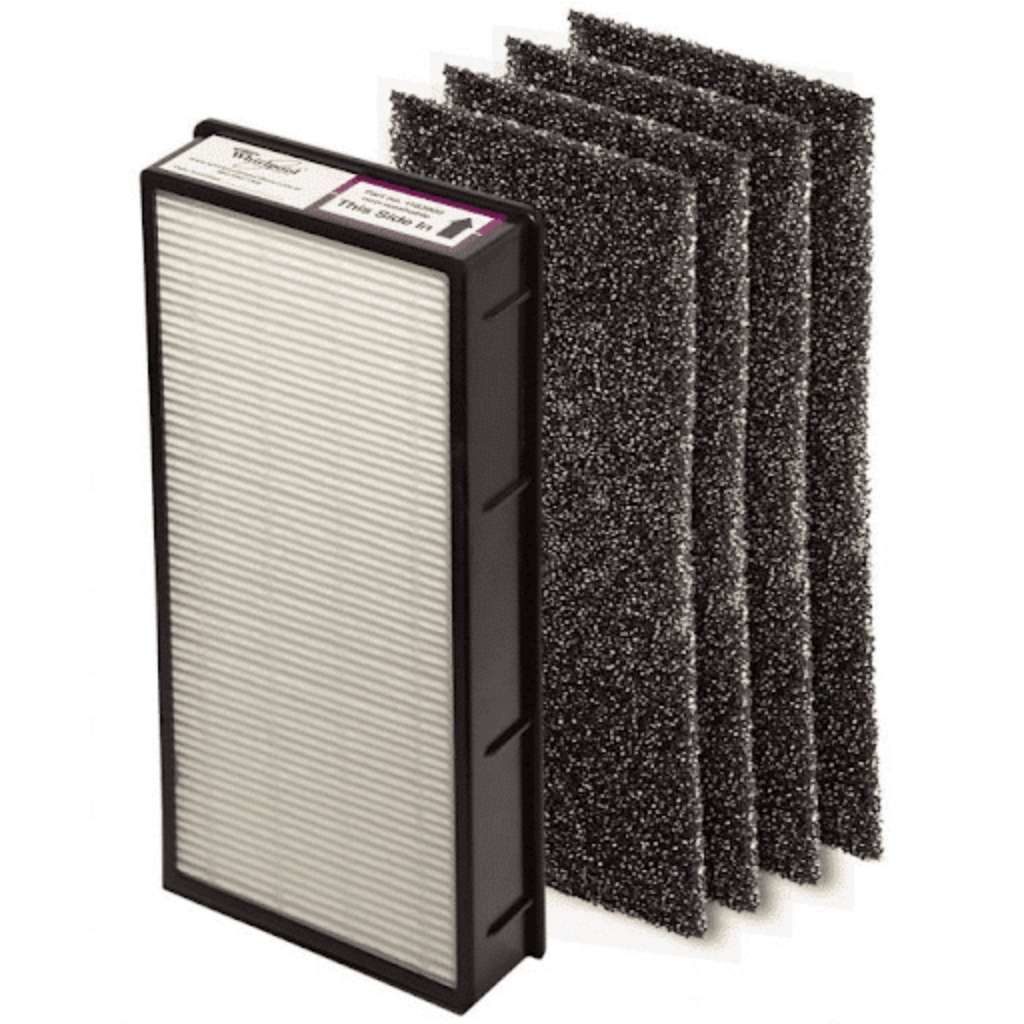
활성탄은 공기 정화에 어떻게 작용하나요?
더러운 공기는 활성탄을 통과하여 정화 시스템으로 들어갑니다. 그러면 필터 층이 정화됩니다. HEPA 필터와 함께 사용하면 탄소층이 더 큰 입자가 HEPA에 도달하는 것을 방지합니다.
이에 대한 설명이 있습니다. 이온 공기청정기와 헤파의 차이점, 알고 싶으시면 클릭하세요!
이온수기 공기청정기는 어떻게 작동하나요?
이오나이저(이온 공기청정기)란?
이온화기는 전하를 사용하여 오염된 공기를 정화합니다. 오염 물질의 크기를 0.1마이크론까지 줄일 수 있으며, 이는 트루 헤파 필터보다 더 정밀한 것으로 볼 수 있습니다.
그러나 오존 배출량은 특히 0.05ppm 이상일 경우 건강에 위험할 수 있습니다.
따라서, 자외선 기능이 있는 진정한 HEPA 공기청정기 필터는 일반적으로 이오나이저 공기청정기보다 선호도가 높습니다. Blueair와 같은 일부 브랜드는 이오나이저 필터와 HEPA 기술을 결합하여 효과적인 공기 청정기를 만듭니다. 블루에어 공기청정기 제조업체.
이오나이저 필터의 또 다른 장점은 HEPA 필터와 달리 가끔씩 교체할 필요가 없다는 점입니다.
이온화 필터는 어떻게 작동하나요?
이오나이저는 전기를 사용하여 실내 환경에서 음이온을 방출하여 공기 중 오염 물질을 충전하는 방식으로 작동합니다. 정전기로 입자를 충전하면 입자가 가구에 떨어지거나 가장 가까운 물체에 달라붙기만 하면 됩니다. 이렇게 하면 공기 중 오염 물질이 제거되고 필터링된 신선한 공기를 느낄 수 있습니다.
자외선 공기청정기는 어떻게 작동하나요?
UV-C 광선 필터란?
UV-C 광선 필터는 고성능 공기청정기에 사용되는 필터의 일종으로 바이러스와 박테리아를 죽일 수 있습니다. 여기에 트루 헤파 필터 및 활성탄을 결합하면 강력한 공기 청정기가 될 수 있습니다.
예를 들어 HA-HL15 공기 소독 청정기 에는 공기 살균을 위한 5가지 유형의 필터가 있습니다. 이 필터 중 하나는 UV-C 광선 필터입니다. 또한 HEPA 필터와 활성탄이 있어 오염 물질을 포집하고 악취를 제거하며 바이러스를 죽이는 시설에 적합하도록 설계되었습니다.
UV 필터는 어떻게 작동하나요?
공기 살균 청정기의 UV-C 광 필터는 미생물 활동을 비활성화하는 256nm 파장을 가지고 있습니다. 트루 헤파 필터와 활성탄이 꽃가루와 바이러스를 포획하면 UV 필터가 미생물을 파괴하고 더 이상 번식하지 못하도록 합니다. 따라서 실내 공기 정화를 살균합니다.
물 공기청정기란 무엇이며 물 공기청정기는 어떻게 작동하나요?
물 공기청정기는 끈적끈적하고 공기 중의 다양한 유해 유기체를 포집할 수 있습니다. 이것이 바로 물 기반 공기청정기의 원리입니다. 물로 공기 정화. 팬은 공기를 물층 안팎으로 밀어냅니다. 물은 공기 중의 불순물을 걸러내어 다시 주변으로 밀어냅니다. 이 메커니즘은 물 기반 공기청정기가 독감 제거에 가장 적합한 이유입니다.
공기청정기의 작동 원리: 혼란 해결
공기청정기가 가습기처럼 작동하나요?
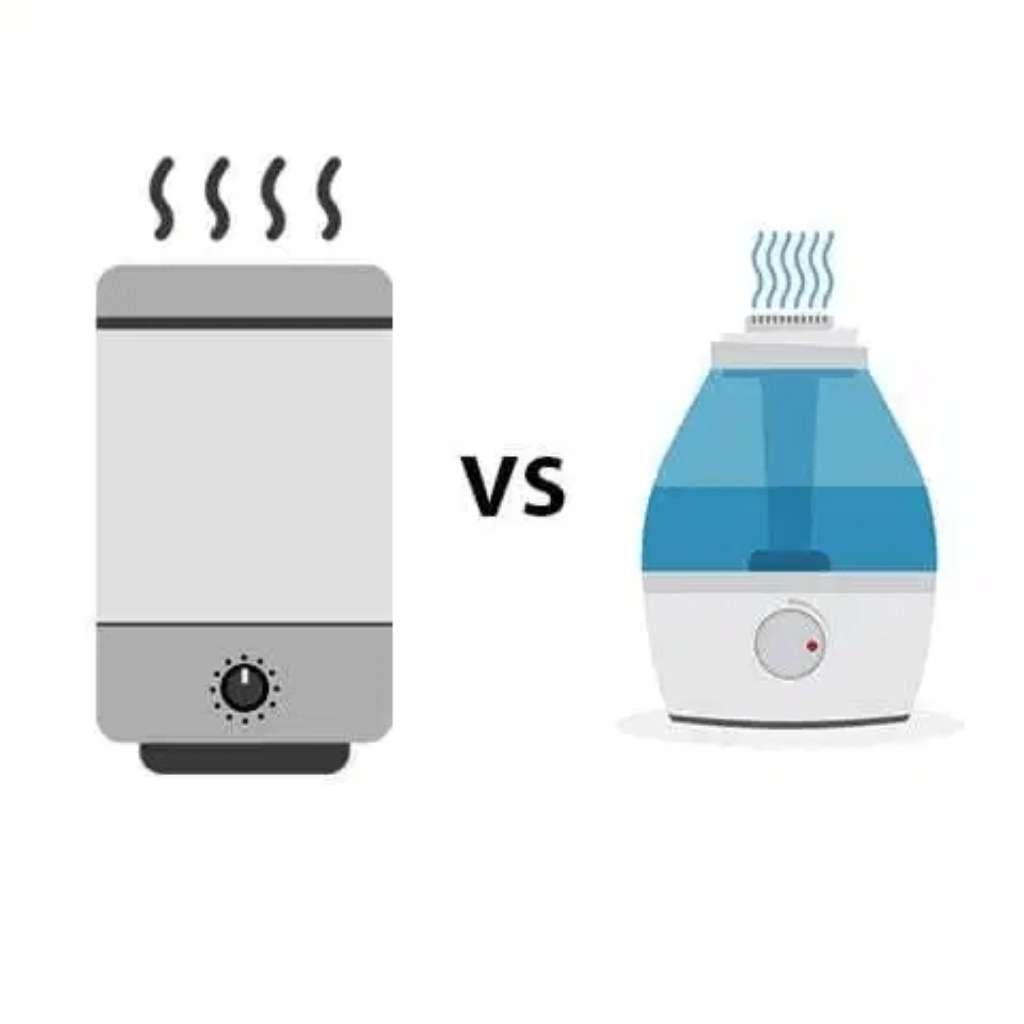
공기청정기와 가습기의 차이점은 무엇인가요?공기청정기는 가습기와 달리 공기 중에 수분을 추가하지 않기 때문에 가습기처럼 작동하지 않습니다. 가습기는 "연기 같은" 미스트를 공기 중에 분사하여 수분 함량을 높이지만 공기를 정화하지는 않습니다. 공기청정기는 공기를 정화하지만 공기를 습하게 만들지는 않습니다.
공기청정기가 선풍기처럼 작동하나요?
아니요, 공기청정기는 선풍기처럼 작동하지 않습니다. 설계상 실내를 냉각시키지 않는 것으로 알려져 있습니다. 하지만 공기 유량이 많은 일부 공기청정기는 더 많은 공기를 불어넣을 수 있습니다.
선택한 공기청정기가 더 많은 공기를 내보낼 수 있는지 확인하려면 다음을 확인하세요. CADR 등급. CADR은 청정 공기 전달률의 줄임말로, 특정 공간 크기에서 기계가 공기를 얼마나 강하게 방출할 수 있는지를 CFM 단위로 알려줍니다.
예를 들어 다이슨 퓨어 쿨 링크가 있습니다, 다이슨 퓨어 쿨 타워 그리고 다이슨 퓨어 핫+쿨 는 높은 팬 출력으로 설계되어 공기를 정화하면서 실내를 시원하게 해줍니다.

기존 공기청정기는 다음과 같이 설계되었습니다. 보다 조용한 방식으로 운영 하지만 이 다이슨 공기청정기는 높은 팬 출력으로 다른 공기청정기보다 더 크게 작동합니다.
공기청정기가 작동하는 데 걸리는 시간?
미덕으로 공기 청정기는 다음을 취할 수 있습니다. 15분~1시간 를 사용하여 실내 전체 공기량을 청소할 수 있습니다. 그러나 이 측정은 모든 창문과 문 개구부가 닫혀 있거나 막혀 있는 상황을 기준으로 합니다.
실제로는 공기청정기가 실내를 청소하는 데 걸리는 시간은 약 45분에서 3시간 정도입니다. 요인으로는 공기청정기의 전원 설정, CADR 및 ACH가 있습니다.
공기청정기가 열린 창문에서 작동하나요?
공기청정기는 실내의 더러운 공기를 흡입하여 정화하는 방식으로 작동합니다. 따라서 당연히 모든 창문과 문이 닫혀 있을 때 가장 잘 작동합니다.
그러나 모든 창문이 열려 있어도 공기 청정기는 실내의 오염 물질을 상당히 낮출 수 있습니다.
의 연구 smartairfilters.com 에 따르면 오염 수준은 다음과 같이 감소합니다. 모든 창문이 열려 있어도 20분 만에 60% 달성 . 상대적으로 방 창문을 닫은 상태에서 90%로 오염 물질을 줄일 수 있습니다.
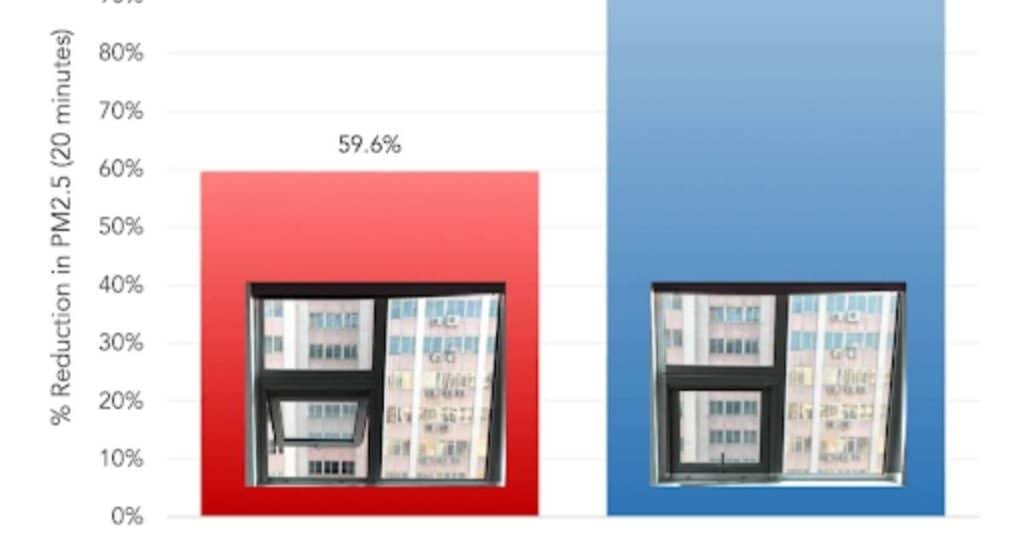
따라서 모든 창문이 열려 있어도 공기청정기는 여전히 상당한 효과를 발휘할 수 있습니다.
실내 공기질 개선 방법
공기청정기가 최상의 효율로 작동하려면 실내 면적과 필터링 요건을 충족하는 제품을 선택해야 합니다.
배송이 가능한 기기를 선택하세요:
- 객실 면적에 필요한 CADR
- 방의 유형(병원, 격리실, 거실 또는 침실)에 따라 공기를 교환해야 하는 횟수(ACH)를 지정합니다.
객실 면적에서 CADR까지
그렇다면 CADR을 사용하여 내 방에 가장 적합한 공기청정기를 선택하려면 어떻게 해야 할까요?
가장 간단한 방법은 AHAM의( 가전제품 제조업체 협회 )를 권장합니다. 객실 크기를 평방피트 단위로 구한 다음 이를 1.55로 나누기만 하면 됩니다. 이 공식은 천장 높이가 8피트인 방에 유효합니다.
예를 들어 침실 면적이 150제곱피트인 경우 CADR을 구하려면 150을 1.55로 나누면 96.77이 나옵니다. 즉, 방 크기에 맞는 공기청정기를 효율적으로 사용하려면 CADR이 97CFM 이상인 공기청정기를 구입해야 합니다.
ACH와 CADR의 작동 방식
시간당 공기 교환량은 사용 중인 공간의 유형과 애플리케이션을 기반으로 합니다. 해당 공간에서 중요한 활동이 많을수록 시간당 공기 교환 횟수가 더 높아야 합니다.
일반적으로 모든 공간의 ACH는 4 이상인 것이 이상적입니다. 이는 공기청정기가 1시간에 4번 실내 공기를 정화해야 한다는 뜻입니다.
침실에 공기청정기를 설치한다고 가정해 보겠습니다. 이에 적합한 ACH는 4입니다. 위의 150평방피트 침실의 예를 참조하여 CADR에 필요한 ACH를 곱합니다. 97 CFM에 4 ACH를 곱하면 387 CFM이 됩니다.
즉, 공기청정기가 가장 쾌적하고 적합한 방식으로 작동하려면 4 ACH를 기준으로 CADR이 387 CFM(또는 400CFM)인 제품을 선택해야 합니다.
이를 다음 공식으로 요약하면 다음과 같이 계산할 수 있습니다. 공간에 가장 적합한 공기청정기를 찾아보세요:
필요한 CADR = [객실 크기(평방피트)/1.55] x ACH
MERV 등급은 어떻게 작동하나요?
간단히 말해서 MERV 등급 는 필터를 통과하는 다양한 공기 중 오염 물질을 포집하는 특정 필터의 효율성을 알려줍니다. 또한 메르브 등급이 높은 필터는 작은 입자를 포집하는 데 탁월한 것으로 알려져 있습니다.
공기청정기는 어떻게 작동하나요? 공기청정기 브랜드마다 차이가 있나요?
공기청정기의 작동 원리를 아는 것은 다음과 같은 경우에 중요합니다. 최고의 공기청정기 브랜드 선택하기/생활 공간이나 업종에 맞는 기능을 찾아보세요.
코웨이 공기청정기는 어떻게 작동하나요?
최근 코웨이 공기청정기 평가 및 후기 표준 여과 시스템을 사용하여 공기 중 오염 물질을 제거합니다. 이러한 공기청정기의 흡입구는 공기를 흡수하여 여러 층의 필터(예: 프리필터, HEPA 필터, 카본 필터)를 통과시킵니다. 공기가 공기청정기의 배출구로 나가기 전에 이러한 필터에 의해 입자와 오염 물질이 포집됩니다.
레보아 공기청정기는 어떻게 작동하나요?
다른 공기청정기와 마찬가지로 올해도 레보아 공기청정기의 리뷰 및 등급은 다음과 같습니다. 필터를 사용하여 공기 중 위협을 제거합니다. 공기 흡입구가 있어 내부로 공기를 끌어들입니다. 일단 내부로 들어온 공기는 여러 층의 필터를 통과합니다. 이 필터는 공기 중에 존재하는 입자와 오염 물질을 가두는 역할을 합니다.
하니웰 공기청정기는 어떻게 작동하나요?
기준 2022년 하니웰 공기청정기 테스트 및 등급 평가브랜드는 필터를 사용하여 공기 중 오염 물질을 제거합니다. 따라서 기본 메커니즘은 다른 필터 기반 공기청정기와 유사합니다. 기본적으로 공기를 흡수하는 팬이 있습니다. 그러면 공기가 필터를 통과하여 오염 물질을 포집합니다. 그 후 공기는 다시 실내로 방출됩니다. 공기청정기는 이 과정을 반복하여 오염 물질이 빠져나가지 못하도록 합니다.
필립스 공기청정기는 어떻게 작동하나요?
에 따르면 필립스 공기청정기 리뷰, 필립스 공기청정기에 사용되는 필터는 필립스만의 독자적인 기술입니다. 이 제품에는 나노프로텍트 HEPA 필터 는 0.003마이크론의 오염 물질까지 제거하여 미세한 공기 중 위협으로부터 완벽하게 보호합니다. 카본과 프리 필터는 특별한 것은 아니지만 여전히 잘 작동합니다.
위닉스 공기청정기는 어떻게 작동하나요?
다른 공기청정기와 비슷합니다, 위닉스 공기청정기 평가 및 리뷰 필터 기반 여과를 사용합니다. 즉, 특정 공간의 공기를 흡수하여 필터 쪽으로 밀어내는 방식입니다. 이 필터는 공기가 다시 실내로 밀려 들어오기 전에 기존의 공기 중 오염 물질을 제거합니다.
홈즈 공기청정기는 어떻게 작동하나요?
홈즈 공기청정기 테스트 및 리뷰 필터 기반 여과를 사용한다는 점입니다. 기본적으로 다양한 유형의 필터를 사용하여 다양한 유형의 공기 중 오염 물질을 포집합니다. 공기청정기는 실내 공기를 흡수하여 이러한 필터를 통과시킵니다. 이 과정을 통해 공기 중에 존재하는 오염 물질이 기기 밖으로 배출되기 전에 제거됩니다. 이 과정을 반복하면 공기가 깨끗하고 통기성이 유지됩니다.
마이 공기청정기는 어떻게 작동하나요?
샤오미 공기 청정기 리뷰 검증된 여과 시스템을 사용한다는 점에서 다릅니다. 특히, 특정 공간 내에서 공기를 흡수하는 팬이 있습니다. 그런 다음 공기는 여러 필터 층으로 전달됩니다. 이 필터는 공기 중에 존재하는 기존 오염 물질을 걸러냅니다. 그런 다음 공기는 다시 실내로 재분배됩니다. 이 과정을 반복하여 오염물질이 빠져나가지 못하도록 합니다.
공기청정기는 어떻게 작동하나요? 공간에 따라 다양하게 사용할 수 있나요?
공기청정기의 작동 원리에 대한 몇 가지 오해에 대해서도 설명해 드렸습니다. 마지막으로 공간 조건에 가장 적합한 공기청정기를 선택하는 방법에 대한 팁을 추가했습니다.
차량용 공기청정기는 어떻게 작동하나요?
의 효과 차량용 공기청정기 고품질 필터를 정확하고 효율적으로 사용하는 것입니다. 필터는 공기 중에 떠다니는 다양한 오염 물질을 포집하는 검증된 시스템입니다. 히소에어에서는 기존의 공기 여과 기술을 개선하여 실내 공기 오염을 방지하는 공기청정기의 기능을 향상시켰습니다.
휴대용 공기청정기의 작동 원리(동영상 포함)
제조업체에서 생산한 휴대용 공기청정기 도 사용의 용이성과 편의성 때문에 주로 구매하는 인기 제품입니다.
공기청정기의 작동 원리: 요약하기
보다 더 유용한 히말라야 소금 램프, a공기청정기는 실내 공기를 정화하고 공기질을 개선하는 역할을 합니다. 공기청정기의 다양한 필터 유형에 대해 알아봤습니다. 어떤 공기 필터는 오염 물질을 가두는 용도로, 어떤 필터는 냄새를 제거하는 용도로, 또 어떤 필터는 바이러스를 죽이는 용도로 사용됩니다.
히소에어는 15년 이상의 공기청정기 생산 경험을 가진 중국의 공기청정기 제조업체입니다. 비즈니스 문의 또는 견적 요청은 다음 연락처로 문의하시기 바랍니다. 문의 양식 .


